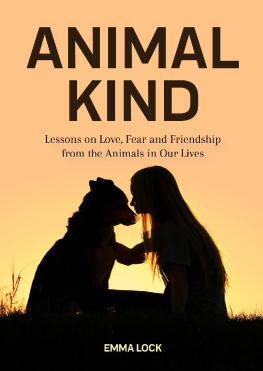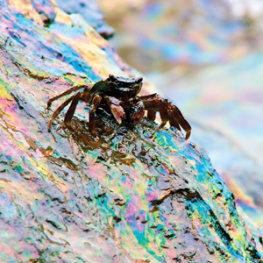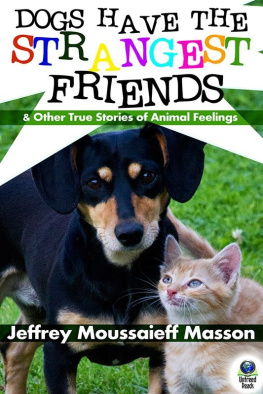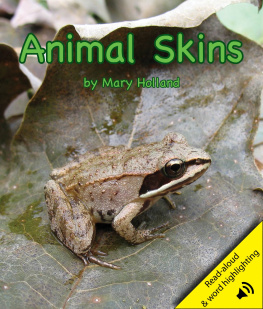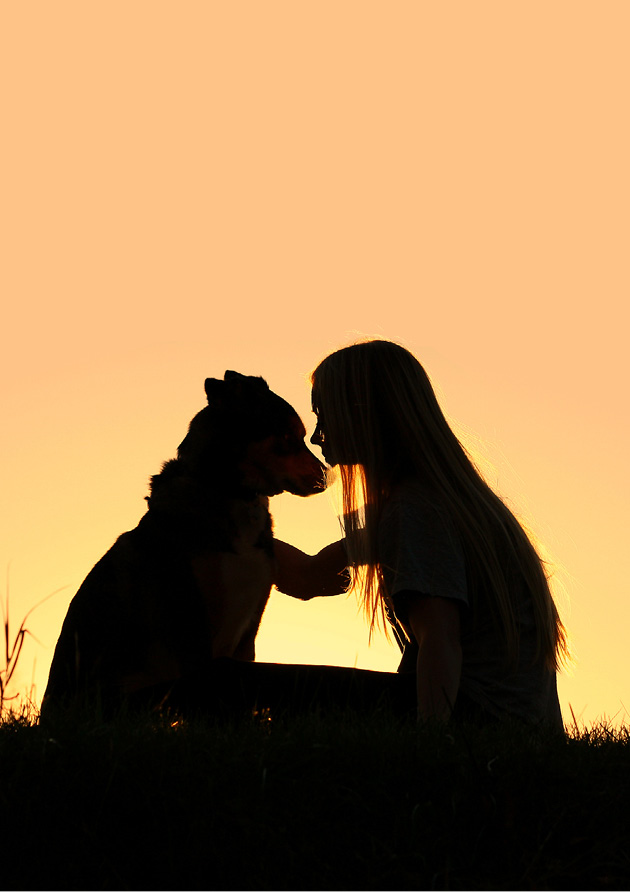
Animal Kind
Animal Kind
Lessons on Love, Fear and Friendship from the Animals in Our Lives
By Emma Lock

Coral Gables
Copyright 2020 by Emma Lock.
Published by Mango Publishing Group, a division of Mango Media Inc.
Cover Design: Elina Diaz
Cover Photo/illustration: Christin Lola/Shutterstock
Layout & Design: Elina Diaz
Mango is an active supporter of authors rights to free speech and artistic expression in their books. The purpose of copyright is to encourage authors to produce exceptional works that enrich our culture and our open society.
Uploading or distributing photos, scans or any content from this book without prior permission is theft of the authors intellectual property. Please honor the authors work as you would your own. Thank you in advance for respecting our authors rights.
For permission requests, please contact the publisher at:
Mango Publishing Group
2850 S Douglas Road, 2nd Floor
Coral Gables, FL 33134 USA
For special orders, quantity sales, course adoptions and corporate sales, please email the publisher at or +1.800.509.4887.
Animal Kind: Lessons on Love, Fear and Friendship from the Animals in Our Lives
Library of Congress Cataloging-in-Publication number: 2019948623
ISBN: (print) 978-1-64250-162-9, (ebook) 978-1-64250-163-6
BISAC category code PETS / Essays & Narratives
Printed in the United States of America
For those who keep me safe,
but leave me wild.
Table of Contents
Im fairly confident that most fledgling authors dont normally type How to write a book introduction into their Google search bar. Im also mostly convinced that other writers search histories dont include terms like What if my book doesnt sell?, Dealing with imposter syndrome and Should I just give up on my life, bury myself in the cold soil, and become a carrot?
The truth is that as much as I have yearned to write this book and have been utterly and completely obsessed with this project for months, this book almost didn t happen.
Its exciting to enter into a project where you know that you will be baring your soul (with all its sparkles and shadows) on paper or in an audiobook for the first time, but theres also something unexpectedly jarring about it too. Its a surreal feeling to know that the words you write, the lessons you learn, and the secrets you share may be enjoyed, critiqued, or survive for many decades. That is, unless this book becomes the disgrace of all literature and a secret, elite band of authors issue an order to have all copies of this bo ok burned.
I think Ive finally made peace with the fact that the circumstances under which I finished writing Animal Kind have been less than ideal. Indeed, my imposter syndrome and self-doubt have paled into insignificance when I think back over the past three months and wonder how on earth I managed to survive what can only be described as an unexpectedly prolonged nightmare.
In my personal story Bear, which you will read a little further into the book, you will glimpse a world which I have kept hidden and ferociously protected for several years. There is a part of me, though it is much less dominant now, which didnt want to share this part of my story, worried that I might be viewed as damaged goods or somehow a failure.
The truth is that everyone has their struggles. Nobody could (or should) journey through life without picking up a few bumps and bruises here and there.
In a way, were a bit like bananas. We start off a little green and rather sweet, but rapidly become less firm (well, hello there, thirties!) and we begin to accumulate bruises and blemishes which make us unique. If you take away anything from this book, its that we are al l bananas.
When I first put pen to paper (or rather fingers to phone) I was cruising at about 33,000 feet on a flight to Omaha, Nebraska, eager to finally collect my long awaited Eurasier puppy, Kiba. If youre unfamiliar with the Eurasier as a breed, they resemble a colourful Samoyed and can be found in stunning wolf-grey colours, reds, agoutis, and all black. Kiba is almost completely a solid black colour, with a little secret patch of red armpit hair. He might bless you with a glimpse of these magical hairs if you give him a belly rub. Theyve simply been developed as a companion breed, even-tempered and fabulou s-looking.
I was inspired to begin writing Animal Kind at this time because a few seats ahead of me on the aircraft was a man and his service doga beautiful bord er collie.
Knowing that I had been given the green light to begin writing my book about the ways in which animals inspire positive change in our lives, and knowing now that Kiba had been selected from his litter to become my ESA, I felt that the timing was right.
If youre unfamiliar with the term ESA it stands for Emotional Support Animal. In North America, Emotional Support Animals, Therapy Animals, and Service Animals provide invaluable services.
Therapy Animals have a calm, sweet demeanour and bring joy to many people by visiting them in hospitals, care homes, and special needs schools. They are also sometimes present in police interview rooms to comfort young witnesses and victims of crime.
Service Animals are highly trained and highly skilled animals who perform duties and tasks for their disabled owners. Seeing-eye dogs are probably the most widely recognised Service Animals, but other types of service animal can include medical alert dogs trained specially to detect seizures or remind their humans to take their medications. Other Service Animals perform tasks which aid their owners, such as opening and closing doors, learning to dial 911 in an emergency, or grounding their owner during a PT SD attack.
Service Animals are most typically dogs but can be miniature horses as well. It is current US law that Service Animals have public access, meaning that they are generally permitted to accompany their owners anywhere a human is permitted to be, such as on aircrafts, at the movie theatre, in restaurants, and in shopping malls. Yes, this means that, on occasion, miniature horses accompany their owners on flights. Its the most bizarre, but adora ble sight.
Service Animals are not considered pets. They are considered to be medical equipment, and therefore necessary to be present with the ir owners.
Emotional Support Animals are not required to be highly trained or highly skilled animals, and their owners dont always have a disability. Therefore ESAs are not Service Animals, but they do offer invaluable therapeutic benefit to their owners by offering comfort and companionship. Emotional Support Animals can technically be any pet (yes, even bullfrogs can be ESAs) but only emotional support dogs (and sometimes cats) are permitted to fly in the cabin of an aircraft if theyre well behaved. Emotional Support Animals are not classified as medical equipment and therefore do not automatically have public acce ss rights.
On my flight to collect Kiba, I was so excited that I hadnt realised that I was practically vibrating. I was shaking my leg, sighing, fidgeting and glancing down at my watch every few minutes. The air hostess who came to offer me a beverage picked up on my body language and asked if I was a nervous flyer. We both laughed when I told her that I was actually just very excited to be meeting my puppy when we landed.
After sipping on some ginger ale (my favourite drink), I put on my huge headphones which are shaped like cat ears and listened to one of my favourite albums, Levity by Da x Johnson.
Next page
